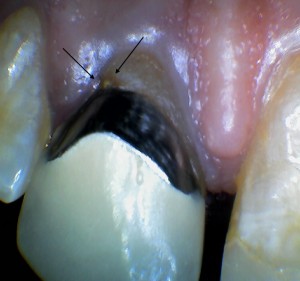7 ways hygienists can help dentists complete the exam
1. Take quality radiographs and have them displayed.
– They should be displayed for you anyway, so this really shouldn’t be an issue.
– Ask yourself this question every time you take radiographs, “If I were 100% responsible for diagnosing everything would I be satisfied with these radiographs?” If not, retake them.
2. Clean the dental mirror.
– A clean mirror makes a significant visual difference.
– Clear vision will enhance the accuracy and speed of the dentist’s exam.
3. Thoroughly debride all pits and fissures.
– Use everything at your disposal (polish, air polish, thin ultrasonic scaler tips, thin sickle scalers, etc.). An air polisher is especially good for this task.
– Remove fragments of poorly placed sealants. I typically use posterior sickles (e.g. rigid shank Montana Jack) for this task.
4. Summarize your overall findings.
– Again, you should exam the patient as if you were 100% responsible for diagnosing everything.
– The information you summarize should be to the point and relevant to the dentist’s personal preferences.
– Highlight findings that are non-routine (e.g. lesion) or that could be easily missed (e.g. disto-buccal decay on #16).
5. Diagnosis and treatment plan non-surgical perio.
– At least 95% of this task should be completed by you, the hygienist.
– I understand the concern with hygienists “diagnosing”, so I would recommend what many call “co-diagnosing”.
– I prefer having the hygienist provide the tentative diagnosis and treatment plan and then having the dentist confirm and formalize that diagnosis and treatment plan. If you and the dentist are working closely together, he or she should rarely have to modify your recommendation.
6. Use loupes and a headlight.
– If you are not using loupes and a good headlight you are missing stuff, period.
– The less you miss, the more you are helping the dentist diagnose what needs to be diagnosed.
7. Routinely discuss dentistry with the dentist.
– These informal chats can be accomplished at any time (e.g. morning huddles, staff meetings, during down time, after work, dental meetings, CE courses, etc.).
– You don’t have to agree with the dentist 100% of the time to be a great team player, but your philosophy and the dentist’s philosophy should agree in most areas.
– When the dentist does disagree with you, don’t take it personally. Human beings who work well together still disagree occasionally. That’s okay.
Mark Frias, RDH
kona26@hotmail.com

I give a lot of credit to people that dedicate themselves to dentistry and work as a team player!
Thank you for the article Mark.